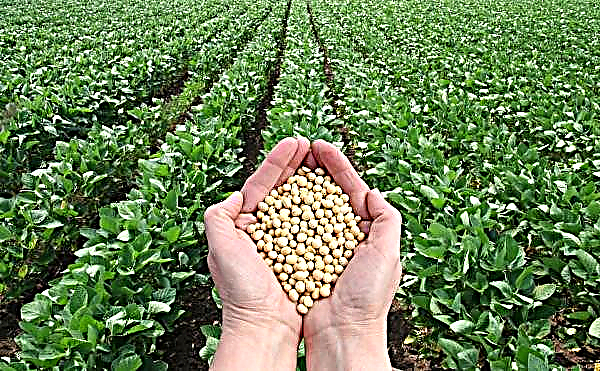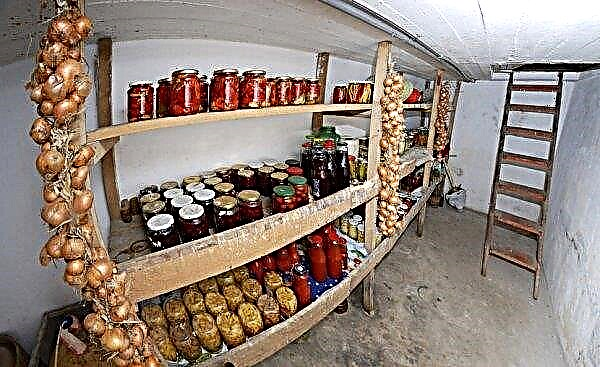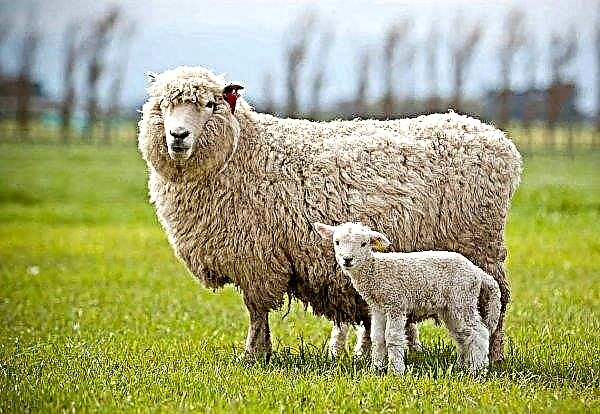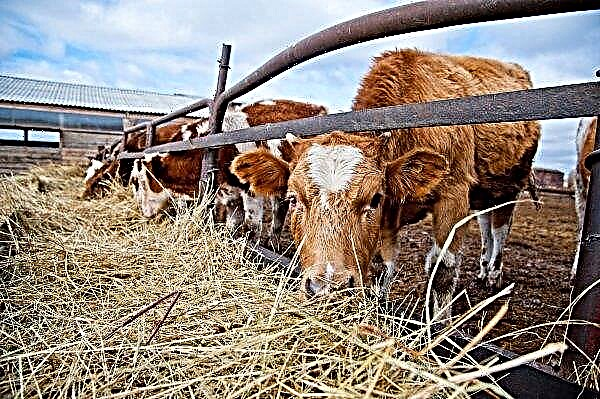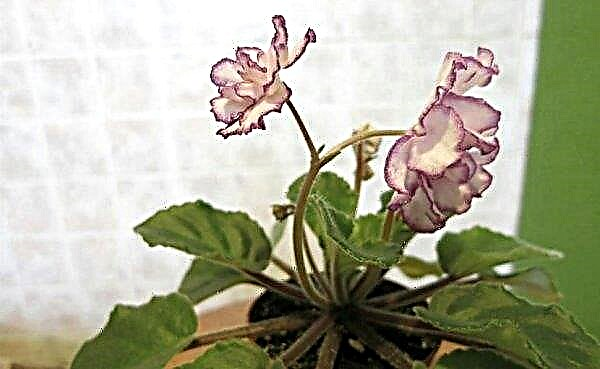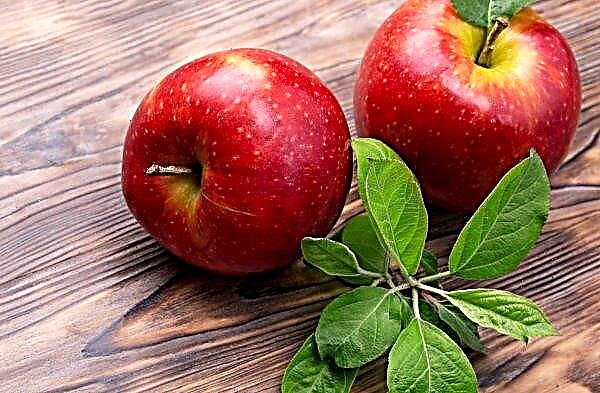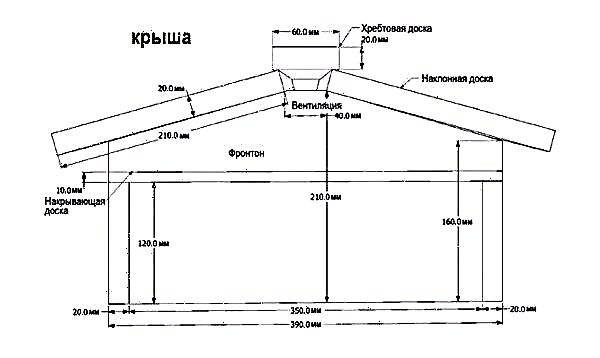Evergreen conifers with a competent arrangement become a real decoration of a suburban, personal, garden plot. Lush trees and shrubs please with year-round decorativeness, strong immunity, unpretentiousness in leaving. However, coniferous culture can be affected by a sudden onset of the disease. You can learn how to avoid such troubles when growing juniper, from the article.
How to understand if there is rust on the juniper
Most often, it can be found in the spring that the juniper shrub has become infected. At this time, the plant’s immune system is still weak after a difficult winter period.
The following factors exacerbate her weakness:
- excessive soil moisture after floods, rising groundwater levels;
- return frosts;
- sharp jumps in temperature that damage the bark, thereby making it vulnerable to the penetration of pathogens.
Did you know? In ancient times, juniper bushes were attributed magical properties. Their branches were taken with them on the road as amulets, so that trouble would not meet on the way.
Infectious diseases caused by fungi are a huge danger to coniferous shrubs.. One of the most unpleasant diseases, which can significantly reduce the decorativeness of a plant and even destroy it, is rust, excited by pathogenic fungi Gymnosporangium confusum, G. juniperinum, G. sabinae.
You can understand that they settled on a shrub by the characteristic symptoms:
- the appearance of bright orange fruiting bodies in May - June;
- thickening, "swelling" on the branches;
- drying out of shoots;
- fall of needles.

When infected with bubble rust, thickened, swollen, curved areas, arachnoid growths appear on the branches. The plant looks depressed. After a year and a half, in the spring a jelly-like substance is formed in them, in which the maturation of spores takes place, later spreading over the site to a distance of several hundred meters.
Sources of disease
Juniper is one of the main sources of infection with the disease, which is described in the article. Once in a favorable environment from plant debris, from the soil or from an infected seedling, fungal spores mature and spread throughout the site to other plants. The next stage of development of the fungus is already on rosaceae crops. Orange spots form on their leaves, black dots are visible on the surface of which. The bottom plate is covered with galls. In the fall, wind spores are again transferred to the juniper, where the fungus continues its harmful effect.
Important! Since the development of the fungus Gymnosporangium sabinae requires 2 hosts - juniper and a representative of the Rosaceae (pear, apple tree, snowdrop, hawthorn, mountain ash, quince), these crops should be planted at a great distance or a barrier between other plants should be arranged between them.
High humidity, frequent rains contribute to the spread of the disease. Spore particles are carried by wind and insects. Since tens of billions of spores can mature in one plant at one time, the disease spreads very quickly. It will take a long time to fight it. Many summer residents are unable to save sick shrubs and trees. In addition to rosaceous cultures, intermediate hosts are also coltsfoot, godson, sow thistle, and bruiser.
The favorable temperature for the development of rust is + 18 ° C. In general, spores mature in a wide temperature range of + 3 ... + 30 ° С and at high air humidity reaching 84–91%.
Video: juniper rust
How to deal with rust: treatment
Treatment consists in the removal and burning of diseased branches, disinfection of cut sites, chemical treatment, and fertilizer application. The described disease should be treated with broad-spectrum fungicides. In the initial stages of the disease, "Fundazol", "Bayleton", "Skor", "Topaz", Bordeaux fluid are effective. Processing should be done in the spring and in August - September. The weather should be warm, calm, cloudy.
Recommendations for spraying:
| Drug name | Number of sprays |
| Bordeaux liquid (2-3%) | 3-4 |
| "Topaz" | 3-4 |
| Saprol | 6 |
| "Ditan" | 6 |
You can process the crown 4 times in the following sequence:
- first and second stage - Bordeaux liquid or "Cuprosil", "Champion";
- third - "Tiovitom", colloidal sulfur;
- fourth “Propi plus.”
All plants are concurrently treated - coniferous and fruit-berry. Treatments will differ in that conifers can be sprayed a large number of times and over a long period. Fruit plants, as a rule, are sprayed no more than 4 times, stopping treatment at least a month before harvest.

All these actions will be effective only until the time when sporulation organs appeared on the culture. After that, the treatment will no longer make sense - it is better to uproot and burn the bush to avoid infection of other crops. After uprooting, the soil in the area where it grew should be watered with boiling water, copper sulfate, Bordeaux liquid.
Alcohol solution
Alcohol solution should be used to treat garden tools before and after pruning the affected branches.. Also, they can lubricate the places of cuts.
Tools should be processed every time when pruning another plant, and their blades can be calcined. This procedure will avoid the spread of the disease in the area.
Important! When working with chemicals, personal precautions should be followed. Spraying should be carried out, protecting the body with a special suit, the respiratory tract with a mask, eyes with glasses, hands with gloves.
Solution of copper sulfate
Disinfection of areas from which diseased shoots were cut can be carried out with a 1% solution of copper sulfate.
When using this drug for spraying the crown, you should adhere to the following sequence:
- For the first time, treat with copper sulphate before the buds open.
- After 2 weeks, resort to the use of one of three agents: copper chloroxide, Ordana, Oksihoma (or Abiga-Peak).
- The third treatment should be done with Kuprosil or Bordeaux liquid (1%).
- If required, treat it with Bordeaux liquid again after 10-12 days.

Garden Var
To wounds healed faster after trimming, they are lubricated with garden var. For the same purpose apply oil paint on drying oil. There is also a more modern and easy-to-use product - RanNet paste. You can buy it at any gardening store.
Prevention
Plant disease is better prevented than treating it. The main rules for preventing diseases are choosing a good site for growing juniper, as well as a healthy seedling, well-conducted agricultural technology, regular care.
The following measures will help prevent rust on the site:
- systematic inspections of landings;
- thorough cleaning of the site in the fall;
- deep digging of the soil on the bayonet of a shovel in the autumn;
- timely and regular feeding;
- the introduction of nitrogen in minimal doses;
- preventive spraying in early spring on sleeping buds with such fungicides: Tilt, Bayleton, Ridomil Gold MC, Vectra, Abiga-Peak, HOM, and others;
- the destruction of plants that are intermediate hosts, and weeds;
- prevention of stagnation of water.
Video: Proper Juniper Care
Do all junipers carry rust
All juniper bushes are the main host or intermediate in the spread of rust. Two varieties are most susceptible to this disease: Virgin and Cossack.
Mushrooms that stimulate rust are able to form various types of spores - monoecious and monoecious. The development of the first of them occurs on one shrub and plants closely related to it. Homogeneous spores affect different plants. So, common juniper becomes the main host, and the apple tree - an intermediate. Pears become infected after partial development of the fungus on juniper bushes belonging to the Cossack species.
Did you know? Juniper smell is able to have a healing effect on the human body. Representatives of the Native American tribes of North America sent patients with tuberculosis of the skin, bones, joints for healing in the thickets of this plant.
Thus, rust is a dangerous fungal disease, which leads to a loss of decorative juniper shrubs and its death. It is difficult to get rid of the fungi that settled on the site. To avoid the disease, one should not ignore the recommended preventive measures, detect the presence of a pathogenic fungus on the plant in the early period, as soon as possible proceeding to competent treatment.

